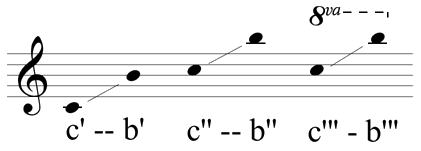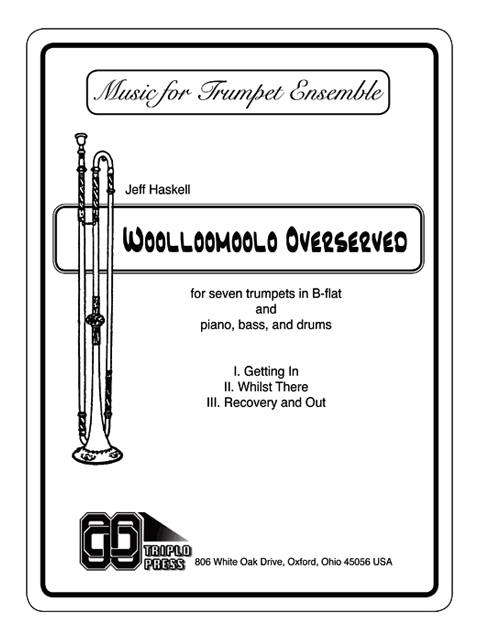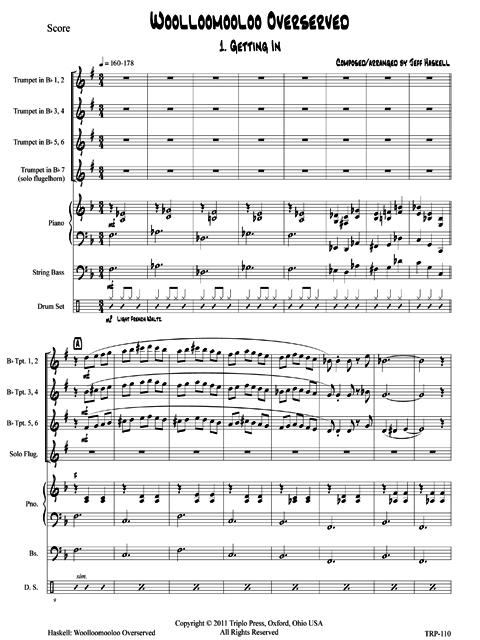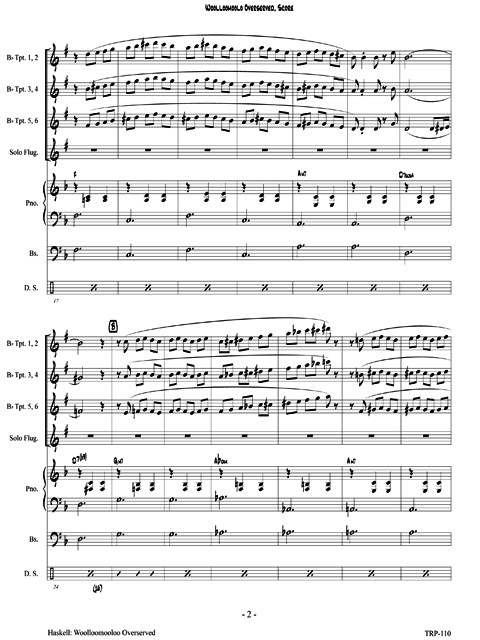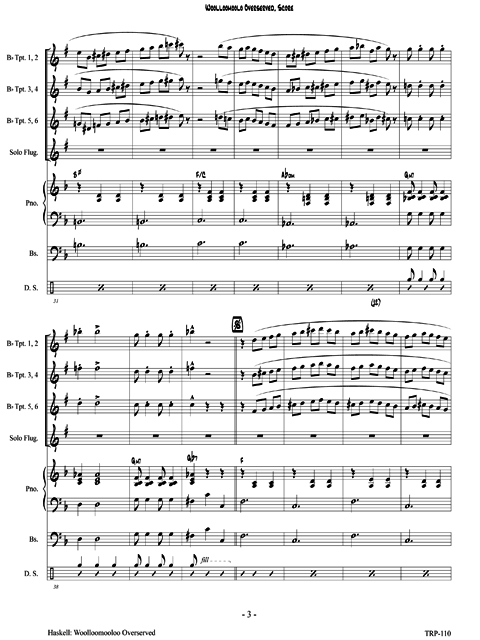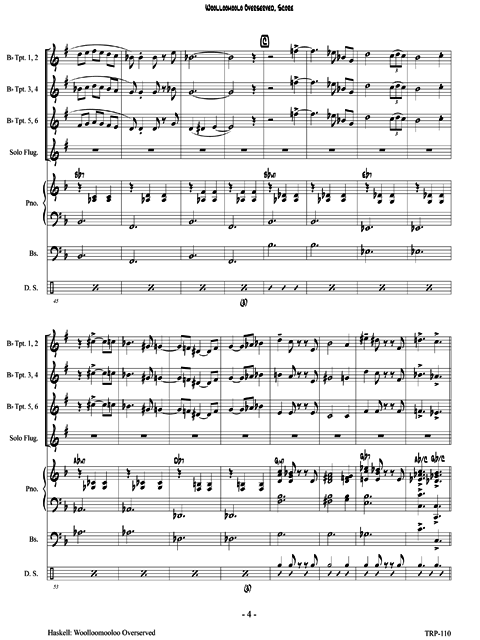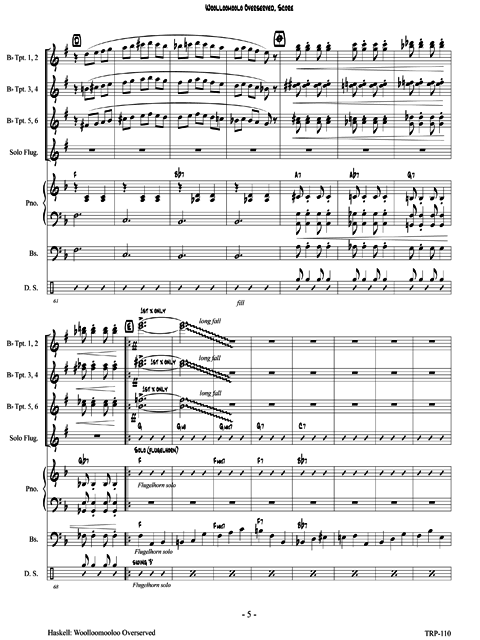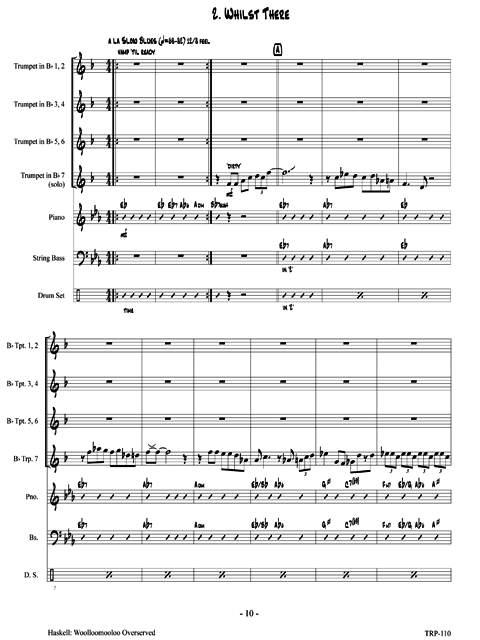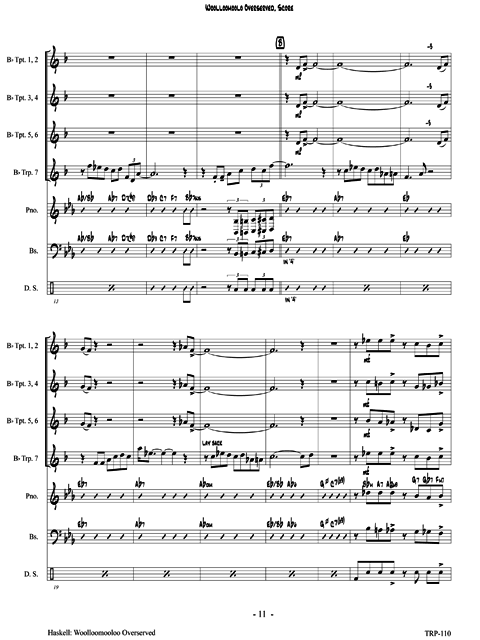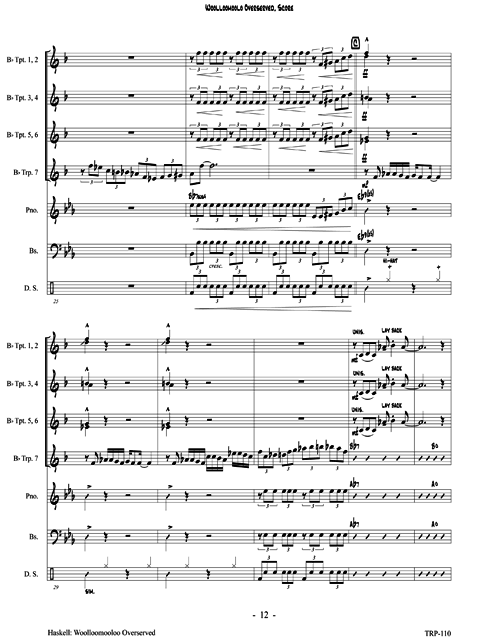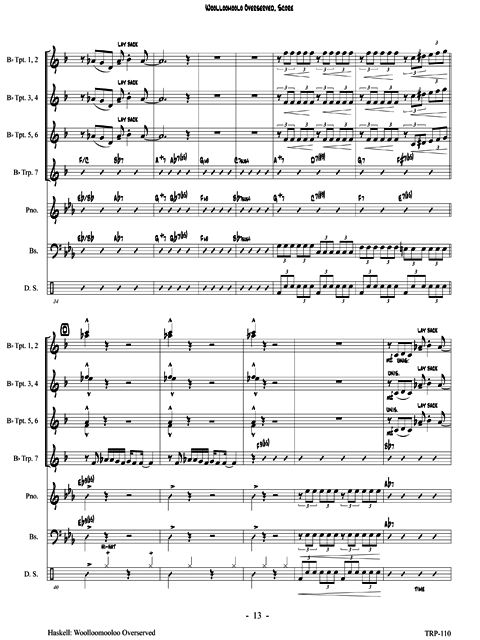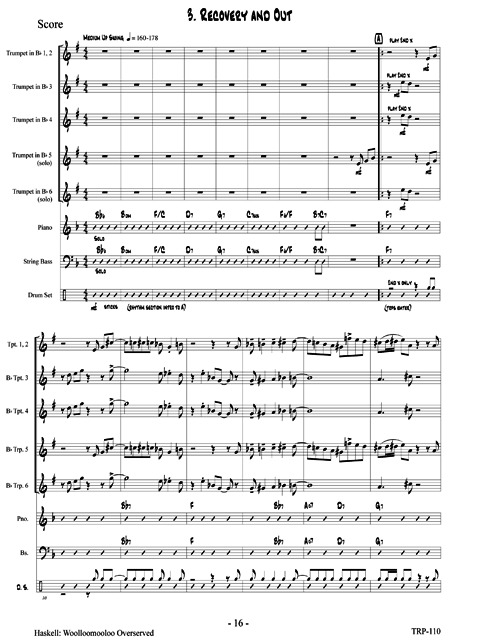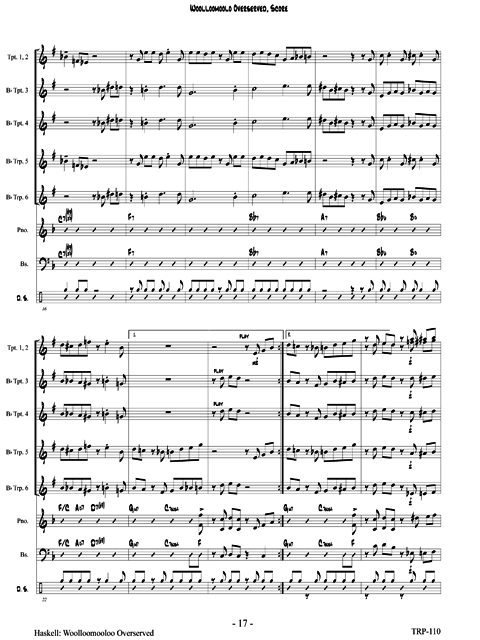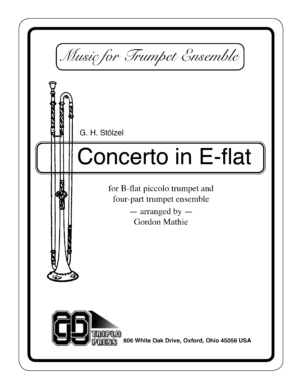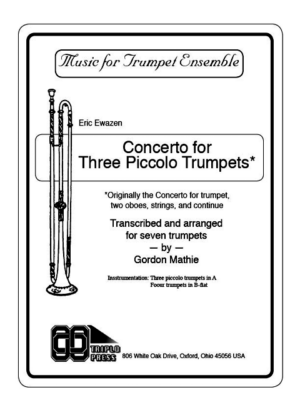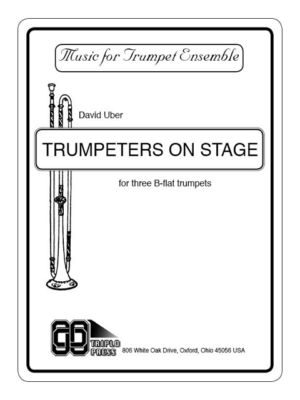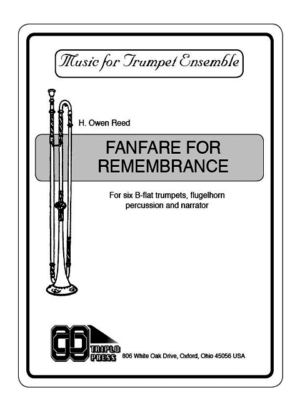0
Cart ▾
There are no items in your cart.
Composer: Haskell, Jeffrey
Number of Trumpets: 7
Accompaniment: Piano, bass, drums
Key: various
Duration: 9 minutes
Difficulty: 6
Price range: $20.40 through $24.00
Woolloomooloo Overserved
 Commissioned by Ed Reid for the University of Arizona's performance at the ITG conference in Australia in 2010 (the recording is of that performance), this piece is in three movements: Getting In, Whilst There, and Recovery and Out.
The first movement is reminiscent of Paris in the 30's, the second is a slow dirty blues, the third a medium up tempo swing duet. Each movement can be played separately, but it is fun to play the piece as a set.
Of the work, the composer writes, "Woolloomooloo is an eastern suburb of Sydney, Australia, and the name may derive from the Aboriginal pronunciation of windmill or even place of plenty. The town, having recently gone through extensive gentrification, doesn't look like it did in the past. When it was first nicknamed "The Loo," it was a rough-and-tumble working class district of New South Wales. Filled with bars, it was often a destination of those who sought to drink on the cheap. This work describes the trip from Sydney to inside "The Loo," party time, and leaving the scene in a good mood."
Commissioned by Ed Reid for the University of Arizona's performance at the ITG conference in Australia in 2010 (the recording is of that performance), this piece is in three movements: Getting In, Whilst There, and Recovery and Out.
The first movement is reminiscent of Paris in the 30's, the second is a slow dirty blues, the third a medium up tempo swing duet. Each movement can be played separately, but it is fun to play the piece as a set.
Of the work, the composer writes, "Woolloomooloo is an eastern suburb of Sydney, Australia, and the name may derive from the Aboriginal pronunciation of windmill or even place of plenty. The town, having recently gone through extensive gentrification, doesn't look like it did in the past. When it was first nicknamed "The Loo," it was a rough-and-tumble working class district of New South Wales. Filled with bars, it was often a destination of those who sought to drink on the cheap. This work describes the trip from Sydney to inside "The Loo," party time, and leaving the scene in a good mood."
Audio Sample
PDF version: $20.40
Printed version: $24.00
